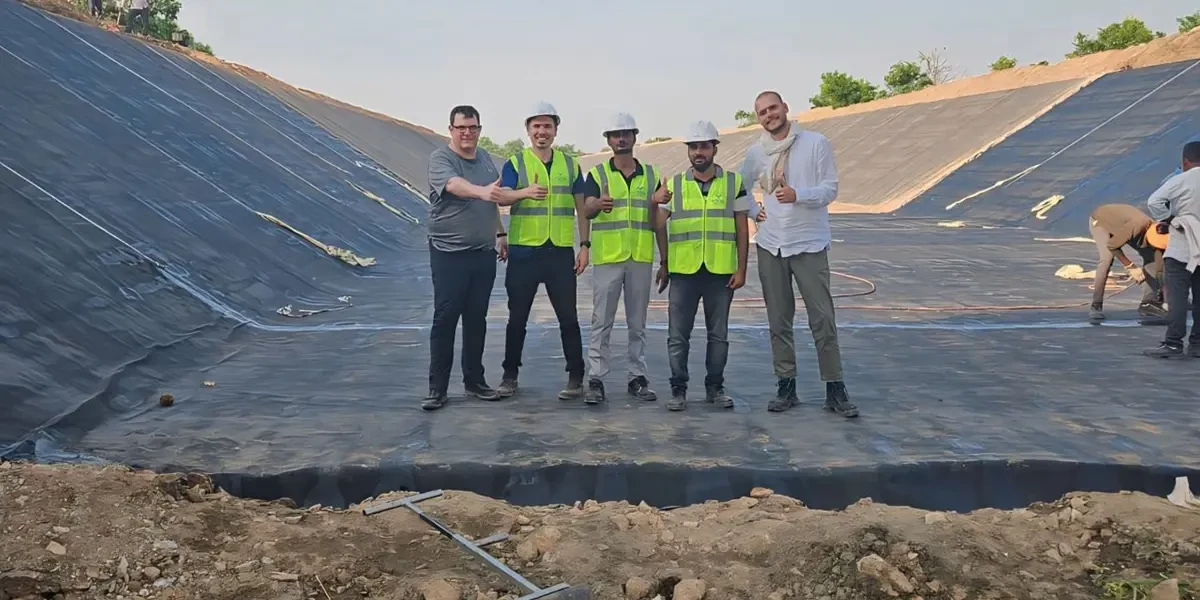

Bituminous geomembranes are a type of synthetic material featuring a flexible polymer core that is laminated with bituminous compounds on both sides. They have become essential in a variety of engineering applications due to their outstanding resistance to water, chemicals, and ultraviolet light. These properties make them particularly suitable for use in wastewater treatment plants, landfill liners, waterproofing roofs, lining canals and reservoirs, as well as in tunnels and underground structures. To ensure the longevity and effectiveness of bituminous geomembrane, proper installation is vital. This detailed guide will explore key installation tips and best practices, offering important insights to achieve the best outcomes and ensure project success.
Installing Bituminous geomembranes are engineered materials featuring a flexible polymer core that is coated with bituminous substances on both sides. These membranes exhibit outstanding resistance to water, chemicals, and UV radiation, making them suitable for various applications, including:
- Serving as linings for lagoons, ponds, and landfills to avert leachate contamination of groundwater and surface water.
- Containing wastewater treatment processes to reduce environmental impact.
- Safeguarding underground pipes and infrastructure from corrosion and damage.
- Preventing leachate from contaminating groundwater and soil.
- Isolating waste from the surrounding environment with the help of a bituminous geomembrane liner. This helps in a great way for clearance of water systems.
- Protecting adjacent water sources and ecosystems.
- Offering a robust and waterproof barrier to shield buildings from moisture-related damage.
- Enhancing energy efficiency by minimizing heat loss and gain.
- Contributing to the longevity and structural integrity of buildings.
- Preventing water loss due to seepage and evaporation.
- Protecting against erosion and sedimentation.
- Ensuring effective storage and distribution of water resources.
- Providing waterproofing and corrosion protection to prevent water infiltration and structural damage.
- Improving the safety and durability of underground infrastructure.
- Lowering maintenance costs and reducing downtime.
Prior to initiating the installation process, it is crucial to take the following factors into account:
YOOIL Envirotech stands out as a premier provider of environmental solutions, delivering an extensive selection of high-quality bituminous geomembranes tailored to meet the rigorous demands of diverse applications. With a strong focus on expertise and a commitment to excellence, YOOIL Envirotech ensures comprehensive assistance throughout the entire installation process, which includes:
Helping clients identify the most appropriate geomembrane to suit their unique requirements.
Providing professional advice on installation methods, seaming techniques, and quality assurance.
Offering project management services to guarantee timely and effective project execution.
Delivering continuous support and assistance following installation.
The correct installation of bituminous geomembranes is crucial for maintaining their durability and long-term effectiveness. Adhering to the recommendations provided in this guide and collaborating with trusted suppliers such as YOOIL Envirotech will facilitate successful and dependable geomembrane applications in your projects. A careful focus on the installation process will lead to a system that is resilient against leaks, punctures, and various types of damage, thereby safeguarding the integrity and lifespan of your project.
